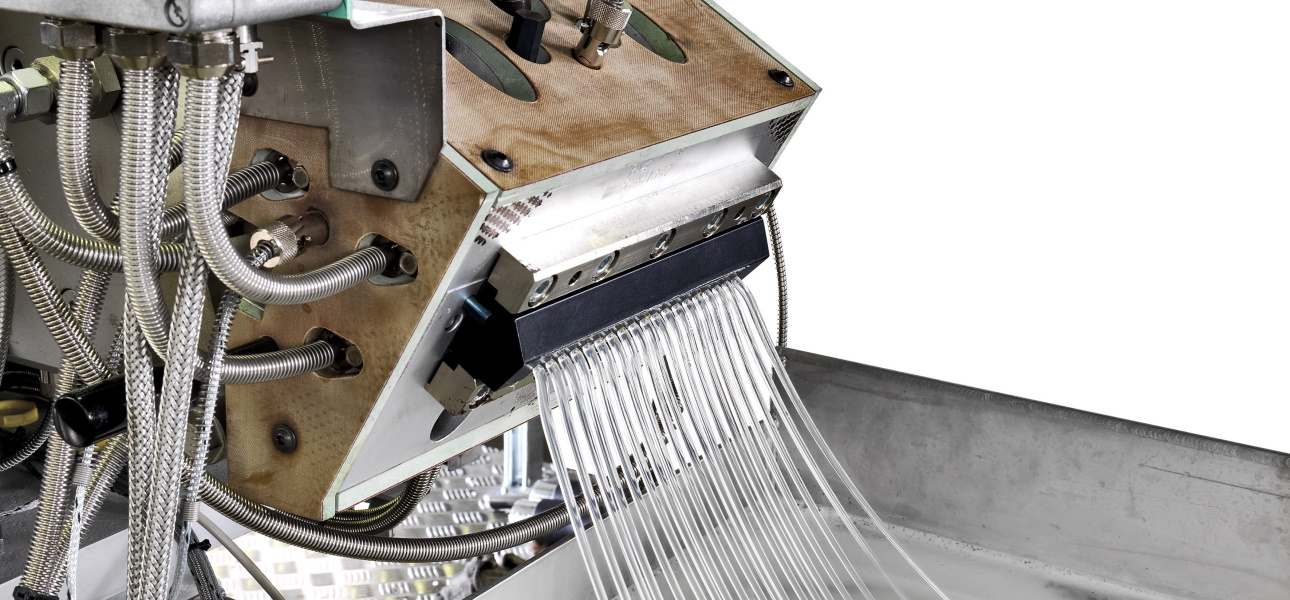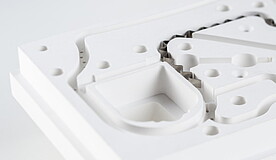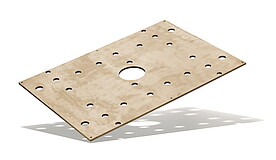Processes
Insulation technology (thermal/electrical)
In the field of engineering, thermal insulation is used to enable and maintain technical processes, or to minimise their cumulative energy consumption in the overall process. Insulating materials are used in electrical engineering to restrict the flow of electric current to conductive parts. The insulating materials in use nowadays are plastics (thermosetting plastics, thermoplastics, elastomers), engineering ceramics and glass; they have a high specific electric resistance (min. 1010 Ω·cm) and are non-conductive. They are also characterised by high dielectric strength and low water absorption. Unlike electric currents, electromagnetic fields (depending on the frequency and wavelength) can penetrate insulating materials to varying degrees.
Overview of all processes

What is the special feature of the process?
A combination of both requirements, that is, thermal and electrical insulation, frequently arises in today's mechanical and plant engineering activities – often accompanied by not insubstantial mechanical loads. Insulation serves as an operating material for protecting plant parts such as the electronic or hydraulic systems not directly involved in the product creation process against excessive heat or to guarantee the occupational safety of employees working in the handling area of the machine. In many cases, fibre-composite and high-temperature materials meet these requirements. The most important fibre composites in economic terms are the glass-fibre-reinforced plastics (GFRP). High-temperature materials are based primarily on calcium silicates, mica or cement. Components are predominantly machined from semi-finished products.
The challenges involved in insulation technology are:
- Long-term stability at the application temperature
- Low setting behaviour (compressive strain) under operating conditions
- Resistance to static and dynamic compressive load (load change)
- Resistance to chemicals, media and oil
- Ability to manufacture complex 3D components
Sample Solutions
High-voltage insulation
What sets these types of insulators apart is the combination of different requirements that simultaneously apply to their implementation.
Insulating components for plastic welding technology
A plastic welding process generates heat that must be insulated. The following applies: The shorter the cycle times, the greater the amount of energy that needs to be introduced into the joining zone.
Complex 3D components for thermal insulation
The manner in which these insulation materials are implemented can be as varied as the requirements placed on them: from a simple intermediate layer all the way to complex 3D components with various material combinations that are produced on a 5-axis…
Nuts made of GFRP material
Our nuts made from glass-fibre-strengthened plastics are available as square or hexagonal nuts.
Screw head insulation
During the process of pinning and screwing components, electrical insulation must frequently be guaranteed. Ceramic cylindrical pins ensure a positive connection while a steel screw provides for the positional connection - the interlocking connection…
Non-material-specific insulation solutions
In many industrial applications, it makes sense to use multi-layered materials or material combinations.
Heat insulation board
DOTHERM and ISOCOS offer heat protection plates that are precisely adapted to the respective process requirements in terms of material, compression strength, temperature resistance and dimensional stability.
Show more Show less







